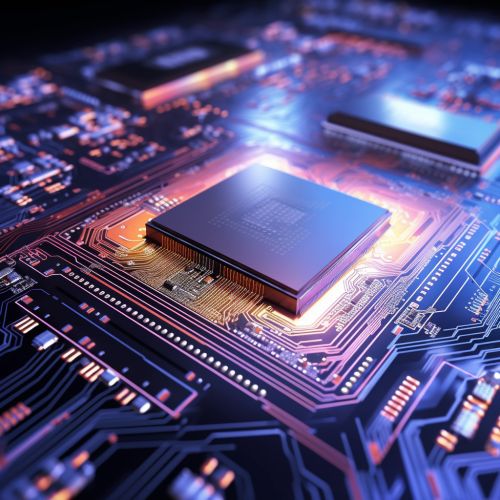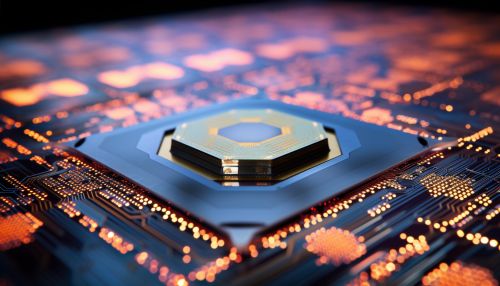Integrated Circuit (IC)
Introduction
An integrated circuit (IC) is a set of electronic circuits on a small chip of semiconductor material, typically silicon. The integration of a large number of tiny transistors into a small chip was a tremendous advancement over the manual assembly of circuits using discrete electronic components. The IC's mass production capability, reliability, and building-block approach to circuit design ensured the rapid adoption of standardized ICs in place of designs using discrete transistors.
History
The idea of integrating electronic circuits into a single device was born when the German physicist and engineer Julius Edgar Lilienfeld patented the field-effect transistor in 1925. However, the practical implementation of the integrated circuit came after Jack Kilby of Texas Instruments and Robert Noyce of Fairchild Semiconductor independently developed the integrated circuit (IC) during 1958–1959.
Fabrication
Integrated circuits are created using planar technology, which involves layering various materials and elements over a silicon base. The process begins with a silicon wafer, which is then layered with an insulating material such as silicon dioxide. This is followed by a layer of conductive material, such as polysilicon or metal. The layers are patterned using photolithography and etching techniques, and the process is repeated multiple times to create the desired circuit.
Types of Integrated Circuits
There are several types of integrated circuits; the most common types are digital, analog and mixed signal (both analog and digital on the same chip). Digital integrated circuits can contain anything from millions of logic gates in a microprocessor to binary circuits such as flip-flops. Analog ICs, such as sensors, power management circuits, and operational amplifiers, work by processing continuous signals. They perform functions like amplification, active filtering, demodulation, and mixing. ICs can also combine analog and digital circuits on a single chip to create functions such as analog-to-digital converters and digital-to-analog converters.
Applications
Integrated circuits have many applications, from computers and mobile devices to appliances and vehicles. They are used in digital systems, such as microprocessors, microcontrollers, and memory chips. In analog circuits, they are used in power management, audio and video equipment, and automotive sensors. In mixed-signal applications, they are used in smartphones, digital media players, and digital cameras.


Advantages and Disadvantages
The advantages of integrated circuits include compactness, ease of mass production, and high speed. They are also low cost, have low power consumption, and high reliability. The main disadvantage of ICs is that they are limited by their size: as they become smaller, they can accommodate more circuits, but they also become more susceptible to damage and interference.
Future Trends
The future of integrated circuits lies in the development of nanotechnology and the move towards molecular electronics. This involves the creation of electronic components at the molecular level, which could lead to even smaller and more powerful ICs.
